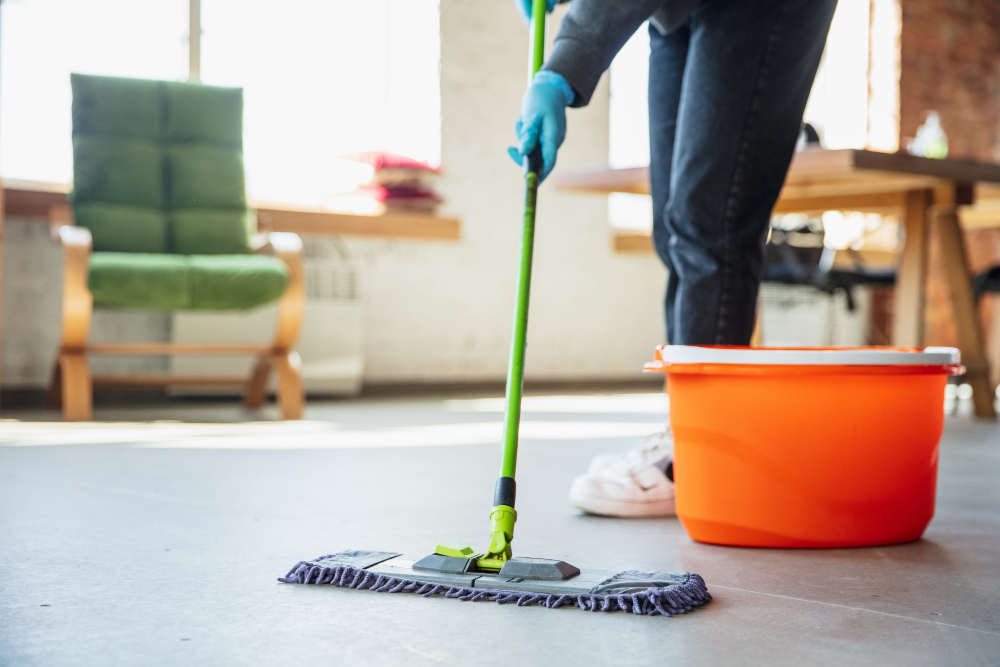SERVING NYC

OBI C. ENE | AUGUST 17, 2023 - 12:30PM

Read and Digest the 10 Rules Listed Below;

Deep cleaning is all about the details. When you take the time to clean the things in your home that are a little harder to get to, you’ll notice how it makes your place feel more tidy and welcoming. To get started, create your cleaning schedule, pick a room, and make a quick run to the store. Then, get ready to tackle all of the details that are covered in our deep cleaning tips.
There are a few different ways you can begin to integrate deep cleaning into your home upkeep routine. If you’ve done any spring cleaning in the past, that’s great! Spring is the perfect time to declutter, clean, and organize, but you should also deep clean more frequently than one season a year. One schedule you can choose to follow is seasonal, or about one weekend deep clean every 3 months. Another option is to break down your deep cleaning checklist into smaller monthly or weekly tasks, tackling one room per month, or 1-2 tasks per week, so that you chip away on an ongoing basis.
The more people who share a living space, the more often it should be deep cleaned. If you live with roommates, divide up the cleaning tasks—both deep cleaning and more ongoing upkeep—equally among everyone. Consider assigning an area of the home (except for the bedrooms, of course) to a different person.
You don’t need fancy specialty cleaners to deep clean your house. Common products like white vinegar, baking soda, dish soap, a scrub brush, and microfiber cleaning cloths are effective and easy to find. Here’s a starter list to help you stock your cleaning cabinet or caddy:
Baking soda paste and one to one vinegar spray are both used throughout our deep cleaning tips. To make the one to one baking soda paste, start with a cup of baking soda and add splashes of water until it forms a paste similar to the consistency of wet sand.
Tip: If you are sensitive to the scent of vinegar, you can add a few drops of any essential oil (like citrus or lavender) to temper the aroma. A squeeze of lemon is a simple fix if you can’t find essential oils.
Tip: Look for the gallon jug of white vinegar and the large bag of baking soda. Buying multiples of the regular sized boxes is perfectly fine but it is more cost effective if you can find the large bag at your local store.
Note: While it’s great for cleaning, vinegar doesn’t disinfect. Learn the difference between disinfecting, sanitizing, and cleaning in our complete guide.
Tip: Most plastic shower curtains and shower curtain liners can go into the delicate cycle in your washing machine, which is a much easier way to clean such a bulky item. Remove the metal hangers before washing and let air dry.
Tip: This is a convenient time to replace or install drawer and cabinet liners and to toss any expired food items.
Tip: You should clean your dishwasher monthly.
Tip: Any time that you juice a lemon, toss the remainder into the garbage disposal and run with hot water to naturally freshen the disposal.

Tip: Flip and/or rotate your mattress every 6 months.
Tip: If your mattress needs freshening, sprinkle with baking soda, let sit for one hour and vacuum. You can also spot clean your mattress as you would a carpet stain in the Floors section below.
Tip: Wash pillows and comforters once a year. If your washing machine is not large enough, take to a laundromat or professional cleaner


Tip: For a DIY carpet steamer, lay a towel over the area and iron with the iron set to the highest steaming setting.
Tip: To refresh carpet or rugs, sprinkle baking soda all over, let sit for 4 hours or overnight, then vacuum the carpet or rug to remove the baking soda.
Tip: You can use the window-cleaning process for cleaning your bathroom mirrors for longer lasting results than using glass cleaner alone.
Tip: You can also use a glass cleaner to clean picture frames. Use ammonia-free glass cleaner and always spray onto the microfiber cloth rather than directly onto the glass to prevent any cleaner from seeping into the frame.
After you deep clean, it’s important to maintain the cleanliness of your home on an ongoing basis. Looking for a home where monthly cleaning is always on the books? Bungalow offers private rooms in shared homes that are more affordable than solo housing options in the same neighborhoods. Wifi, utilities, and monthly cleaning are set up before you move in so that communal living is seamless. Find a Bungalow near you.
Our Mascot of the Week





(973) 393-5677 | (646) 302-8245